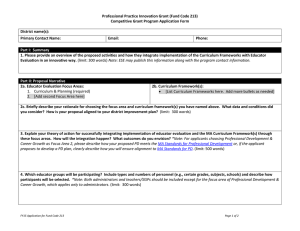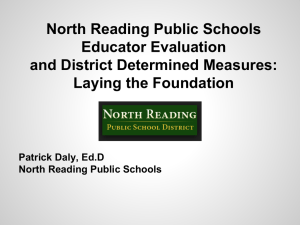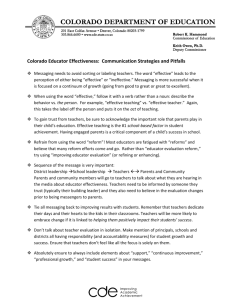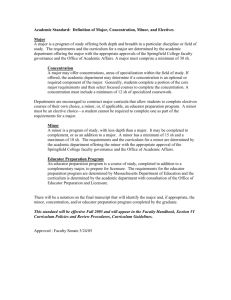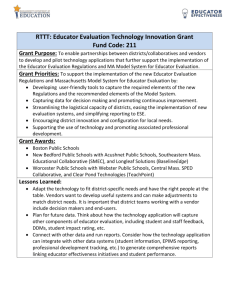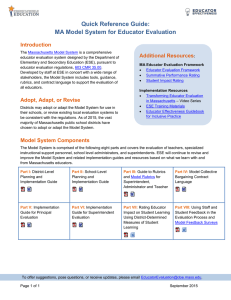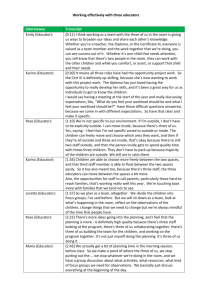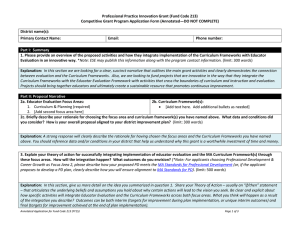Checklist for Evaluating PD - Massachusetts Department of Education
advertisement
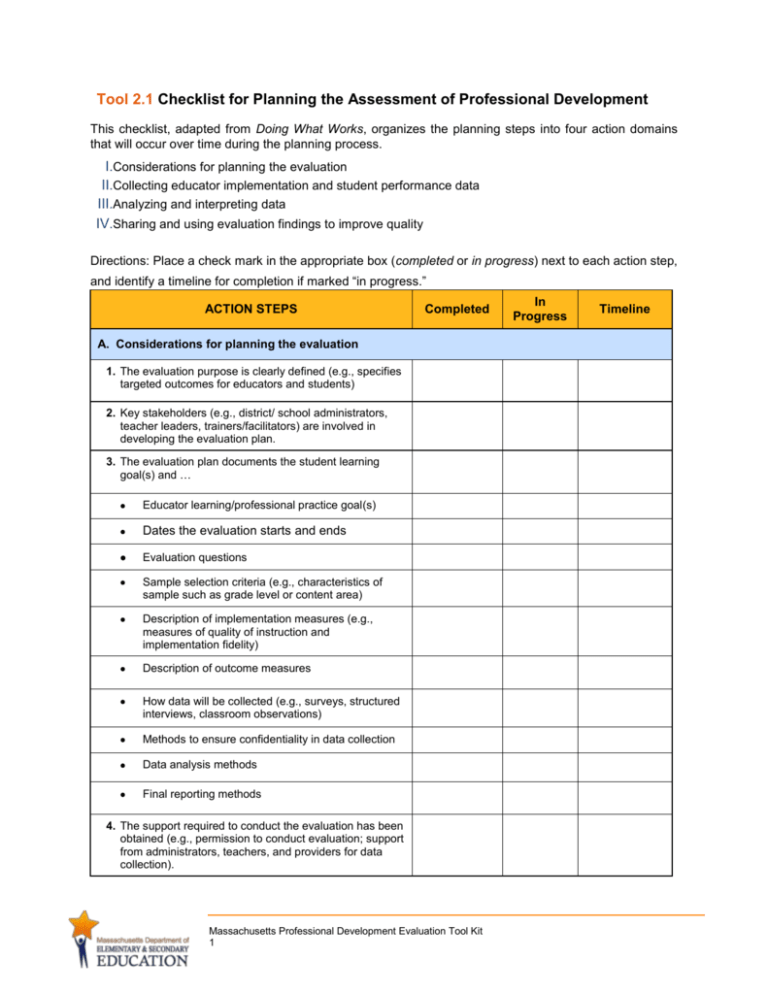
Tool 2.1 Checklist for Planning the Assessment of Professional Development This checklist, adapted from Doing What Works, organizes the planning steps into four action domains that will occur over time during the planning process. I.Considerations for planning the evaluation II.Collecting educator implementation and student performance data III.Analyzing and interpreting data IV.Sharing and using evaluation findings to improve quality Directions: Place a check mark in the appropriate box (completed or in progress) next to each action step, and identify a timeline for completion if marked “in progress.” ACTION STEPS Completed A. Considerations for planning the evaluation 1. The evaluation purpose is clearly defined (e.g., specifies targeted outcomes for educators and students) 2. Key stakeholders (e.g., district/ school administrators, teacher leaders, trainers/facilitators) are involved in developing the evaluation plan. 3. The evaluation plan documents the student learning goal(s) and … Educator learning/professional practice goal(s) Dates the evaluation starts and ends Evaluation questions Sample selection criteria (e.g., characteristics of sample such as grade level or content area) Description of implementation measures (e.g., measures of quality of instruction and implementation fidelity) Description of outcome measures How data will be collected (e.g., surveys, structured interviews, classroom observations) Methods to ensure confidentiality in data collection Data analysis methods Final reporting methods 4. The support required to conduct the evaluation has been obtained (e.g., permission to conduct evaluation; support from administrators, teachers, and providers for data collection). Massachusetts Professional Development Evaluation Tool Kit 1 In Progress Timeline 5. School/ district staff roles and responsibilities in the evaluation are defined for: data collection Data analysis Sharing evaluation findings Developing improvement plan using evaluation findings 6. The school or district evaluation leader has proper oversight to ensure the evaluation is being conducted as planned. B. Collecting data on implementation and effect 7. If relevant, permissions or consents have been obtained from evaluation participants (e.g., providers, teachers, students). 8. The evaluation includes measures on educator learning and practice outcomes (e.g., quality of instruction). 9. The evaluation includes instruments to measure student outcomes which may include: a. Student achievement b. Student engagement c. Student attendance d. Student behavior C. Analyzing and interpreting data 10. Analysis will identify gaps between the professional development, educator learning and practice outcomes, and/or student learning outcomes. 11. Data will be analyzed to identify patterns of findings for areas of strength and areas for improvement. Massachusetts Professional Development Evaluation Tool Kit 2 D. Sharing and using evaluation findings to improve quality of professional development and educator and student learning outcomes 12. Findings will be shared with key stakeholder groups (district/school staff, PD providers, school committee) 13. Multiple presentation formats will be used based on audience need (e.g., written, oral, interim, final). 14. District/school planners and PD providers will collaborate to address areas for improvement. 15. Decisions about improvement of the quality of professional development will be developed based on evaluation findings. Source: Doing What Works, retrieved from http://dww.ed.gov. Massachusetts Professional Development Evaluation Tool Kit 3


